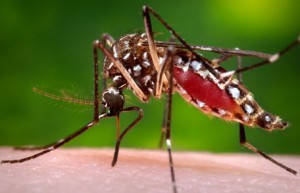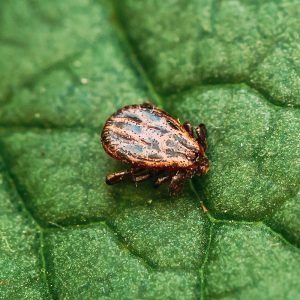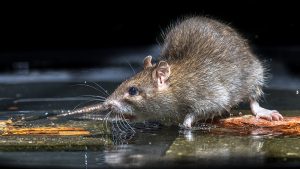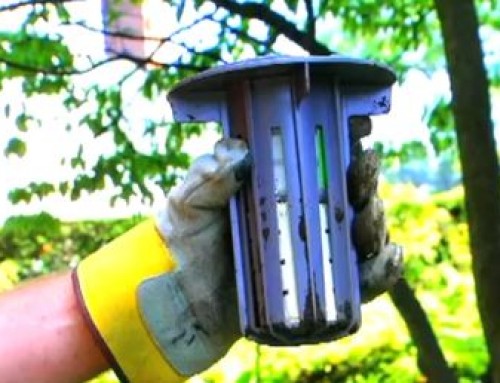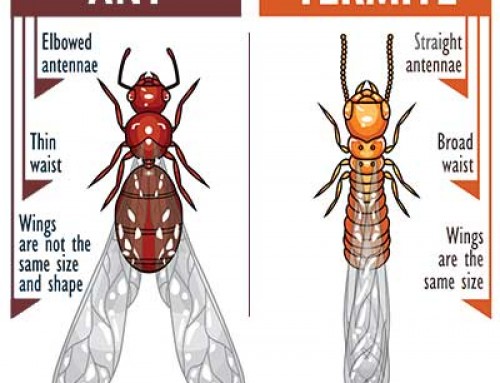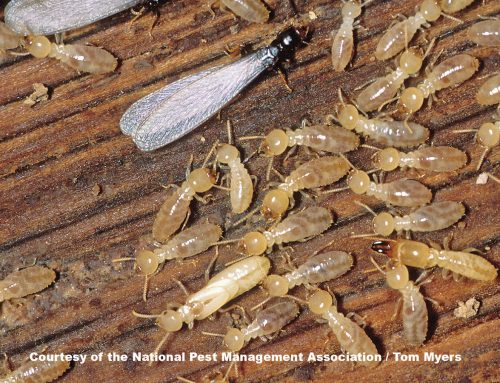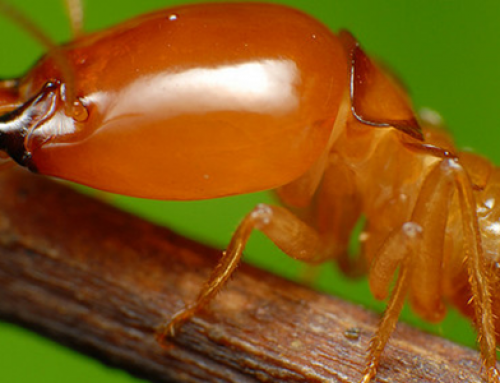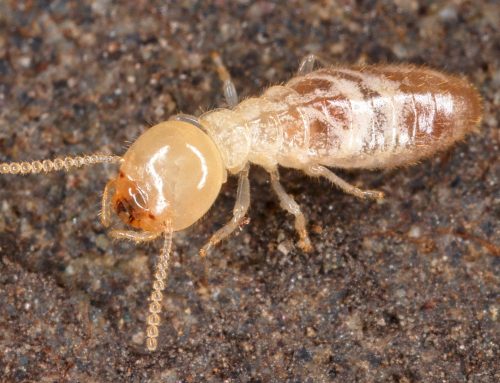Carpenter Ants
Carpenter ants are large, usually black, and often nest in damp or rotting wood around homes. They don’t eat the wood like termites but hollow it out for nesting, which weakens structures over time. Watch for fine sawdust piles and faint tapping sounds from inside walls. If you notice flying ants indoors in the spring, it could signal a mature colony inside.
Termites
Termites become especially active during spring as they swarm to establish new colonies. Their ability to silently chew through wood can cause serious damage before being detected. Check for discarded wings near windows and pencil-sized mud tubes along foundations. Scheduling an annual inspection can help catch termite issues before they escalate.
Mosquitoes
Mosquito populations rise rapidly in spring, breeding in even small amounts of standing water. Not only are they annoying, but they also carry viruses like West Nile and Zika. Inspect flowerpots, gutters, and birdbaths for water collection. Consider using mosquito dunks or natural repellents in water features you can’t drain.
Ticks
Ticks become active as temperatures warm, lurking in tall grass and leaf litter to attach to passing people or pets. They are known carriers of Lyme disease and other infections. Check yourself, children, and pets after being outdoors, especially behind ears, knees, and collars. Keeping grass trimmed and removing yard debris can reduce tick habitats.
Rodents (Mice & Rats)
Rodents look for warmth, shelter, and food inside homes as the weather improves. They’re skilled at squeezing through tiny openings and can damage insulation, wiring, and stored goods. Look for droppings, gnaw marks, or shredded nesting materials in pantries or basements. Seal any cracks or gaps larger than a quarter-inch around your foundation or vents.
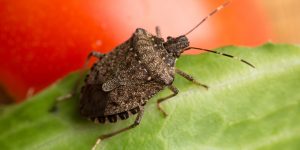 Stink Bugs
Stink Bugs
These bugs sneak indoors in cooler months and emerge during spring, often gathering near windows and walls. When disturbed, they emit a strong, unpleasant smell. Look along window frames and attic spaces for clusters or individual bugs. Gently vacuum them up instead of crushing to avoid spreading the odor.
Wasps & Hornets
Wasps and hornets begin building nests in spring in sheltered, sunny spots like eaves and bushes. They can become aggressive, especially when protecting their colony. Look for early signs of papery nests under gutters or in outdoor play areas. Removing small nests early in the season is safer than waiting for them to grow.
 Spotted Lanternflies
Spotted Lanternflies
Spotted lanternflies are invasive insects that feed on tree sap and excrete a sticky residue that promotes mold growth. They’re particularly harmful to fruit trees and vines. Search tree trunks, patio furniture, and outdoor surfaces for gray, clay-like egg masses. Crushing adults and scraping egg clusters can help slow their spread.
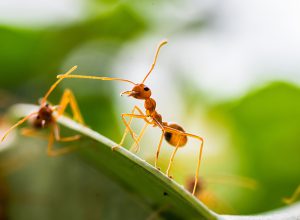 Ants
Ants
Ants often invade homes during spring in search of sugary or greasy foods. They typically travel in long lines and may set up nests behind walls or under floors. Keeping counters crumb-free and storing food in airtight containers can help prevent entry.
 Cockroaches
Cockroaches
Cockroaches thrive in warm, moist environments and usually hide during the day. They can contaminate food and trigger allergies, especially in children. Check behind appliances, under sinks, and in dark cabinets for droppings or egg cases. Fixing leaky pipes and improving ventilation can make your home less inviting to them.
Regular inspections and maintenance can help prevent infestations. If you notice signs of these pests, call us today at 1-800-572-9797.



